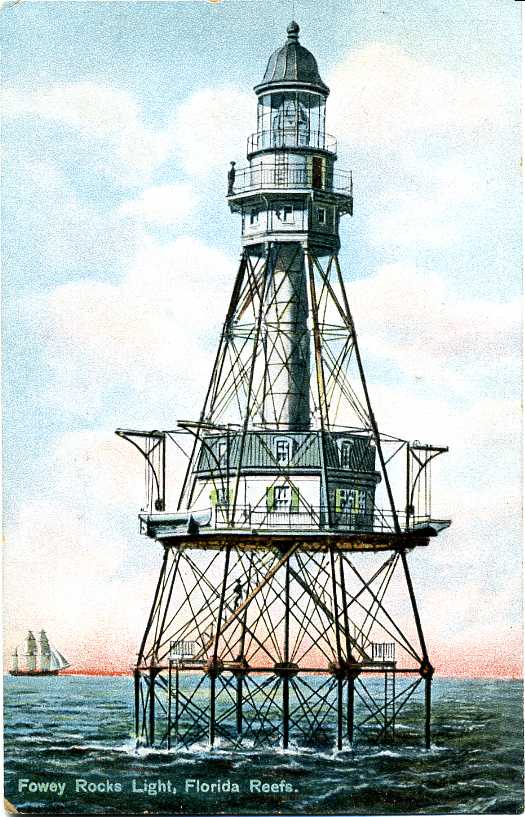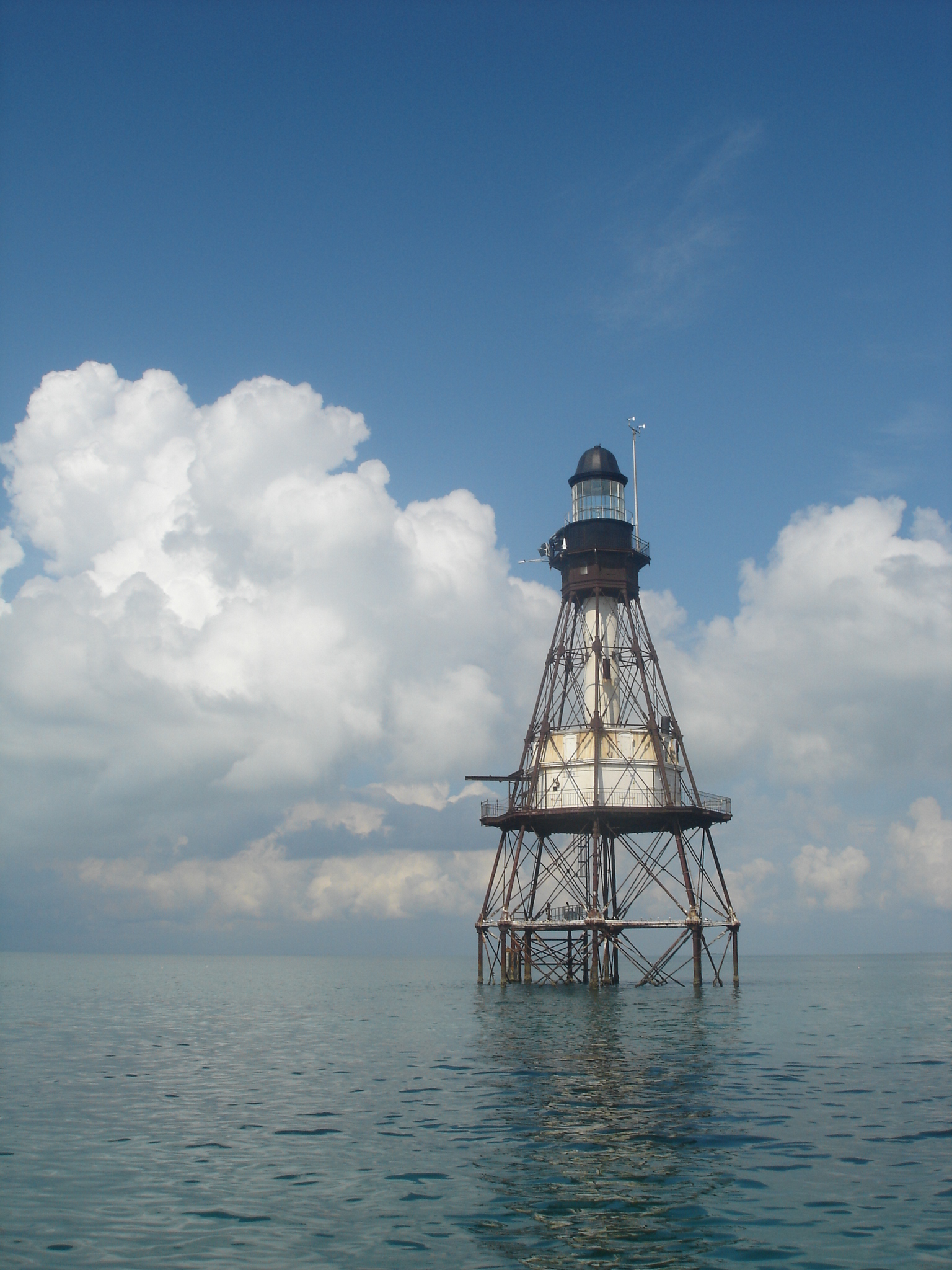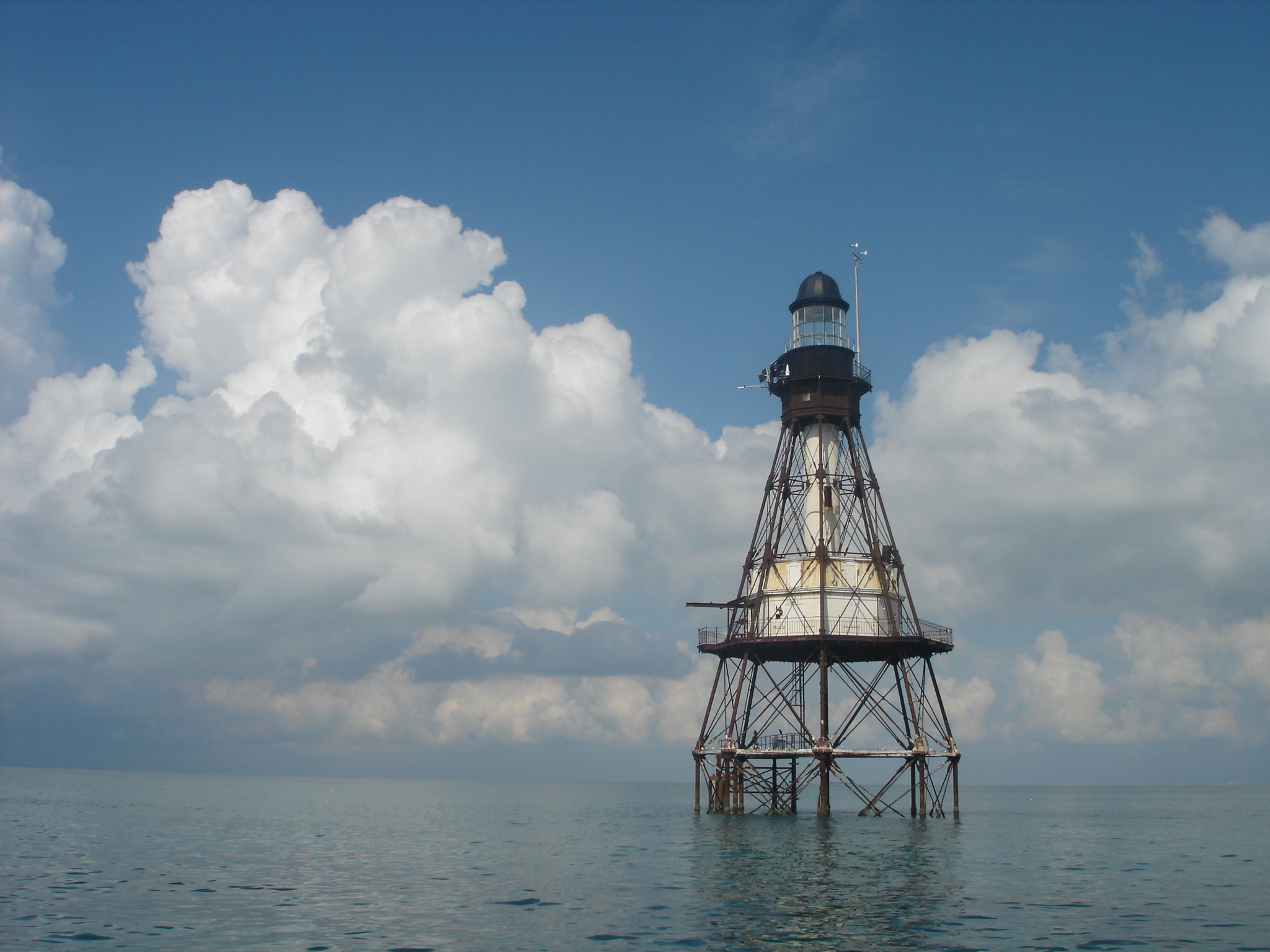
Fowey Rocks Lighthouse transferred to park
HOMESTEAD, Fla. — Jumping back on the boat, Madison Keys, a Miami resident visiting Biscayne National Park had finally made it back to the tour boat from the Fowey Rocks Lighthouse.
“I never thought I was going to see this boat again,” yelled Keys. “I swam way too far away from you guys.”
Fowey Rocks Lighthouse, located southeast off Cape Florida was constructed in 1878. The lighthouse was recently given ownership to Biscayne National Park. The project to build the lighthouse took over two years and was tricky because of its location off the shore. The lighthouse was over a $160,000 project.
“The Coast Guard was excessing the light and advertised its availability.
 |
This picture features a painting of Fowey Rocks Lighthouse in 1800s. The lighthouse was constructed in 1878 (Photos courtesy of Biscayne National Park). |
The preferred method of excess is always simple transfer within the Federal
Government,” said Biscayne National Parks Ranger Gary Bremen. “The American Lighthouse Protection Act makes it easy for lights to be transferred to the NPS, and the park’s Cultural Resource Specialist Chuck Lawson did the legwork to make it happen.”
“It’s amazing to think that well over 100 years ago they were able to build something like this when resources were not abundant,” said Shelby Dowell, a Key Biscayne resident who took a boat tour to the lighthouse. “This lighthouse is truly remarkable.”
Workers were forced to use Soldier Key, a small island four miles east of the lighthouse as headquarters. Crewmembers had to live on the wooden platforms that were built first during most of the construction of the lighthouse. To prevent being hit by storm’s crewmembers built tents out of some of the wood they were going to use for the project.
“You could see the lighthouse was built a long time ago. It was pretty rusty,” Keys said. “It didn’t stop me from jumping off it many times though!”
|
At right, the lighthouse during the middle of a summer day. Below, another view of the lighthouse. |
 |
During construction, weather was constantly an issue. For many months crewmembers were unable to even reach the lighthouse and had to halt the project. Once the project resumed, on two separate occasions, large vessels crashed into the reefs located directly to the west of the lighthouse.
“The reef behind the lighthouse is hard to see I’ve heard, “ said Donald Jones, who is captain to a vessel called Dominica located in Miami. “Luckily we have radar and most reefs that would cause damage have been mapped out so it’s not as much of a problem. I can’t imagine what it was like back then!”
The vessels that hit the lighthouse during its construction were called Carondelet and Arakanapka. The Arakanapka was completely destroyed during the accident but the Carondelet suffered far less damage. “The tour guide said some of this wreckage that you can see on the lighthouse is from the Arakanapka,” said Darshely Yodis, visiting Biscayne National Park from New York.
With the obscure reef located behind the lighthouse, the construction of Fowey Rocks Lighthouse was crucial. The lighthouse was able to provide the light boaters needed to avoid hitting a reef located directly west of the lighthouse.
“With the lighthouse located there now and improved technology, avoiding the reefs has become not a problem,” Jones said.
The lighthouse is 110 feet tall. The structure for the lighthouse is built with cast iron, has a screw pile foundation, a platform and a skeletal tower. A housekeeper used to main the grounds of the lighthouse, but the light was automated in 1975, eliminating the need for that position.
“I think looking at this lighthouse really showed me some history of this country and how we have come a long way,” said Jenny Moore, a Key Biscayne resident and frequent visitor to Key Biscayne National Park. “Lighthouses these days are almost an afterthought and this one is so old.”
The lighthouse is located more than seven miles off shore from Biscayne National Park Visitor Center at Homestead and can only be reached by boat. The Rickenbacker Marina has boat tours that are available to see the lighthouse. “Booking a tour was easy and I thought seeing the lighthouse was very interesting,” said Darshely Yodis.
 Unfortunately, the lighthouse has undergone its share of vandalism and abuse over the years. On Oct. 2, 2012, the lighthouse ownership was transferred to Biscayne National Park. With the park’s ownership, the lighthouse will be protected.
Unfortunately, the lighthouse has undergone its share of vandalism and abuse over the years. On Oct. 2, 2012, the lighthouse ownership was transferred to Biscayne National Park. With the park’s ownership, the lighthouse will be protected.
“Lighthouses have a lot of symbolism associated with them that make them popular. There is romance, danger, safety, nostalgia, history. Having the Fowey Rocks Lighthouse as part of Biscayne National Park is a logical and exciting addition,” said Biscayne National Park Ranger Gary Bremen.
Biscayne National Park, located in South Florida, primarily protects the Biscayne Bay, which is frequently visited by divers. The park covers over 172,000 acres, mainly consisting of water. The park is mainly used for swimming and scuba diving.
“I come to Biscayne National Park almost every month with my son,” said Shane Morse, a resident of Homestead who has a 15-year-old son. “It is our favorite place to scuba dive because of all the reefs that are located in this area.”
If You Go
Fowey Rocks Lighthouse
- Reservations for boat tour: Rickenbacker Marina, 3301 Rickenbacker Causeway
- Call 305-218-2249
Biscayne National Park Driving Directions
From the North
- Convoy Point, location of the park Visitor Center, can be reached from either the Florida Turnpike or from U.S. 1.
- From the Florida Turnpike: Take the Florida Turnpike south, to Exit 6 (Speedway Boulevard). Turn left from exit ramp and continue south to S.W. 328th Street (North Canal Drive). Turn left and continue to the end of the road. It is approximately five miles and the entrance is on the left.
- From U.S. 1: Drive south to Homestead. Turn left on SW 328th Street (North Canal Drive), and continue to the end of the road. It is approximately nine miles, and the entrance is on the left.
From the South
- Traveling on U.S. 1 (Overseas Highway), drive north to Homestead. Turn right on SW 328th Street (North Canal Drive — first light after Florida Turnpike entrance) and continue to the end of the road. The entrance is approximately nine miles on the left.
- 9700 SW 328th St., Homestead, Fla. 33033.
Hours of Operation
- Open 24 hours everyday all year.
- Visitor Center open daily from 7 a.m. to 5:30 p.m.
Fees & Reservations
- Tent camping-$15
- Group tent camping- $30
- Boat Camping- $20
- Boat Tours- http://biscaynenational.com

Comments are Closed